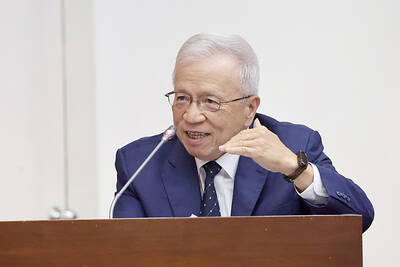Privately run Chinese firms on Thursday bought at least 10 boatloads of US soybeans on Thursday, the nation’s most significant purchases since at least June, traders said, ahead of high-level talks next month aimed at ending a bilateral trade war that has lasted more than a year.
The soybean purchases, which at more than 600,000 tonnes were the largest by Chinese private importers in more than a year, are scheduled for shipment from US Pacific Northwest export terminals from next month to December, two traders with knowledge of the deals said.
The purchases were another indication that trade tensions between Washington and Beijing could be easing, after hitting a low last month when China suspended all US farm product purchases in response to threats by US President Donald Trump to impose more tariffs on Chinese goods.
Benchmark Chicago Board of Trade soybean futures jumped to one-month highs on Thursday, with the actively traded November contract in its steepest rally since May.
Beijing this week renewed a promise to buy US agricultural goods, such as pork and soybeans, the most valuable US farm export.
Large agricultural product purchases are a key US stipulation for a trade deal, but the two sides remain far apart on other issues..
Thursday’s soybean deals were the largest among private Chinese importers since Beijing raised import tariffs by 25 percent on US soybeans in July last year in retaliation for US duties on Chinese goods. Duties were raised an additional 5 percent this month.
Other soybean purchases over the past year have been made almost exclusively by state-owned Chinese firms, which are exempted from the steep import tariffs.
Beijing in July offered to exempt five private crushers from import tariffs on US beans arriving by the end of the year, but very few deals took place before buying was suspended.
Earlier on Thursday, Beijing said Chinese companies were inquiring about prices of agricultural goods.
“I’m impressed that the day they allow their commercial interests to come back and buy from the United States, here we’ve got this much sold immediately,” said Jack Scoville, vice president with Price Futures Group in Chicago.
“Clearly, they’re trying to show what they can do if we get back to somewhat of a normal trade relationship,” he said.
Also on Thursday, the US Department of Agriculture (USDA) reported that China bought 10,878 tonnes of US pork in the week ended Sept. 5, the most in a single week since May.
US meat traders have been anticipating a pork shortage in China due to an outbreak of African swine fever, a fatal pig disease that has reduced the Chinese herd by a third since it arrived in the country more than a year ago.
China is therefore willing to make some US purchases, despite a 72 percent tariff.
US soybean exports to China, the world’s top buyer, have plummeted during the bitter bilateral dispute, with swelling supplies sending prices to near-decade lows and US farmers struggling to turn a profit.
China has largely turned to South America for soybeans since the trade war began. US soybean sales to China last year dropped 74 percent from the previous year to a 16-year low.

JITTERS: Nexperia has a 20 percent market share for chips powering simpler features such as window controls, and changing supply chains could take years European carmakers are looking into ways to scratch components made with parts from China, spooked by deepening geopolitical spats playing out through chipmaker Nexperia BV and Beijing’s export controls on rare earths. To protect operations from trade ructions, several automakers are pushing major suppliers to find permanent alternatives to Chinese semiconductors, people familiar with the matter said. The industry is considering broader changes to its supply chain to adapt to shifting geopolitics, Europe’s main suppliers lobby CLEPA head Matthias Zink said. “We had some indications already — questions like: ‘How can you supply me without this dependency on China?’” Zink, who also

At least US$50 million for the freedom of an Emirati sheikh: That is the king’s ransom paid two weeks ago to militants linked to al-Qaeda who are pushing to topple the Malian government and impose Islamic law. Alongside a crippling fuel blockade, the Group for the Support of Islam and Muslims (JNIM) has made kidnapping wealthy foreigners for a ransom a pillar of its strategy of “economic jihad.” Its goal: Oust the junta, which has struggled to contain Mali’s decade-long insurgency since taking power following back-to-back coups in 2020 and 2021, by scaring away investors and paralyzing the west African country’s economy.

Taiwan Semiconductor Manufacturing Co (TSMC, 台積電) received about NT$147 billion (US$4.71 billion) in subsidies from the US, Japanese, German and Chinese governments over the past two years for its global expansion. Financial data compiled by the world’s largest contract chipmaker showed the company secured NT$4.77 billion in subsidies from the governments in the third quarter, bringing the total for the first three quarters of the year to about NT$71.9 billion. Along with the NT$75.16 billion in financial aid TSMC received last year, the chipmaker obtained NT$147 billion in subsidies in almost two years, the data showed. The subsidies received by its subsidiaries —

BUST FEARS: While a KMT legislator asked if an AI bubble could affect Taiwan, the DGBAS minister said the sector appears on track to continue growing The local property market has cooled down moderately following a series of credit control measures designed to contain speculation, the central bank said yesterday, while remaining tight-lipped about potential rule relaxations. Lawmakers in a meeting of the legislature’s Finance Committee voiced concerns to central bank officials that the credit control measures have adversely affected the government’s tax income and small and medium-sized property developers, with limited positive effects. Housing prices have been climbing since 2016, even when the central bank imposed its first set of control measures in 2020, Chinese Nationalist Party (KMT) Legislator Lo Ting-wei (羅廷瑋) said. “Since the second half of